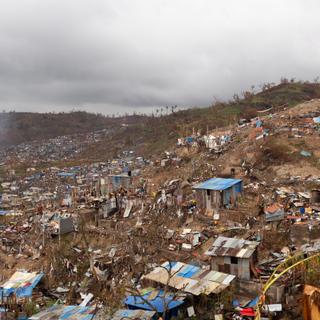


'It's food and drink we need': The plight of survivors in Mayotte's devastated shantytowns
FeatureFive days after the disaster, the inhabitants of French territory in the Indian Ocean shantytowns are trying to rebuild their houses in the middle of a field of ruins. Food and water supplies have still not been established.
"This was a beautiful neighborhood. Now it's a catastrophe." Amid all the debris and surviving furniture, 42-year-old Mounira Ahmed pointed to the apocalyptic landscape with a circular gesture. Perched atop one of the hills in the Karidjavendza district, her family's nine tin houses dominated all the shantytowns of Kawéni, the largest shantytown in France, in the overseas territory of Mayotte. They had an unobstructed view over Petite-Terre and the lagoon. But this advantageous position left them cruelly exposed to gusts of wind in excess of 200 km/h. On Saturday, December 14, the eye of the cyclone passed very close to the town on the western outskirts of Mayotte's capital, Mamoudzou. "It looks like the images after the Hiroshima bomb [in Japan, 1945], doesn't it?" said a dejected mother of three from Anjouan, Comoros, pointing to the green hills that had turned brown in a kind of Mayotte winter that no one could have imagined.
Around this hill, Chido razed houses, but didn't take any lives. "We all know each other here and we know that no one has disappeared," reassured the mother of three. The provisional death toll from the disaster, probably greatly underestimated according to the authorities, stands at 31, with a further 2,100 injured.
Everywhere in the vicinity, it's the same desolation: The shantytowns have become a huge "rubbish dump," according to Zaïdou, one of the residents (people quoted by just their first names did not wish to be identified). Piles of deformed, sharp metal sheets or beams with nails in them, causing new injuries. Uprooted or dismembered trees, coconut palms resembling toothpicks.
You have 81.83% of this article left to read. The rest is for subscribers only.
